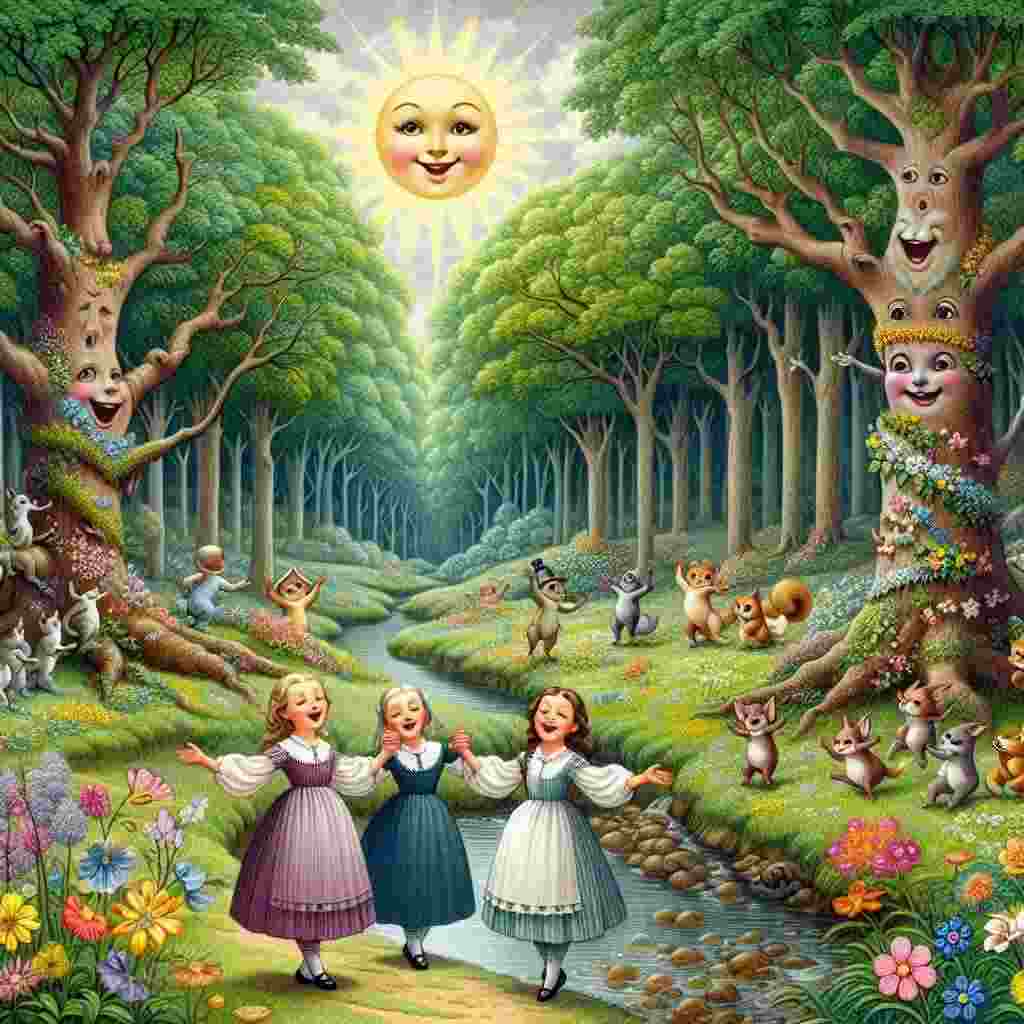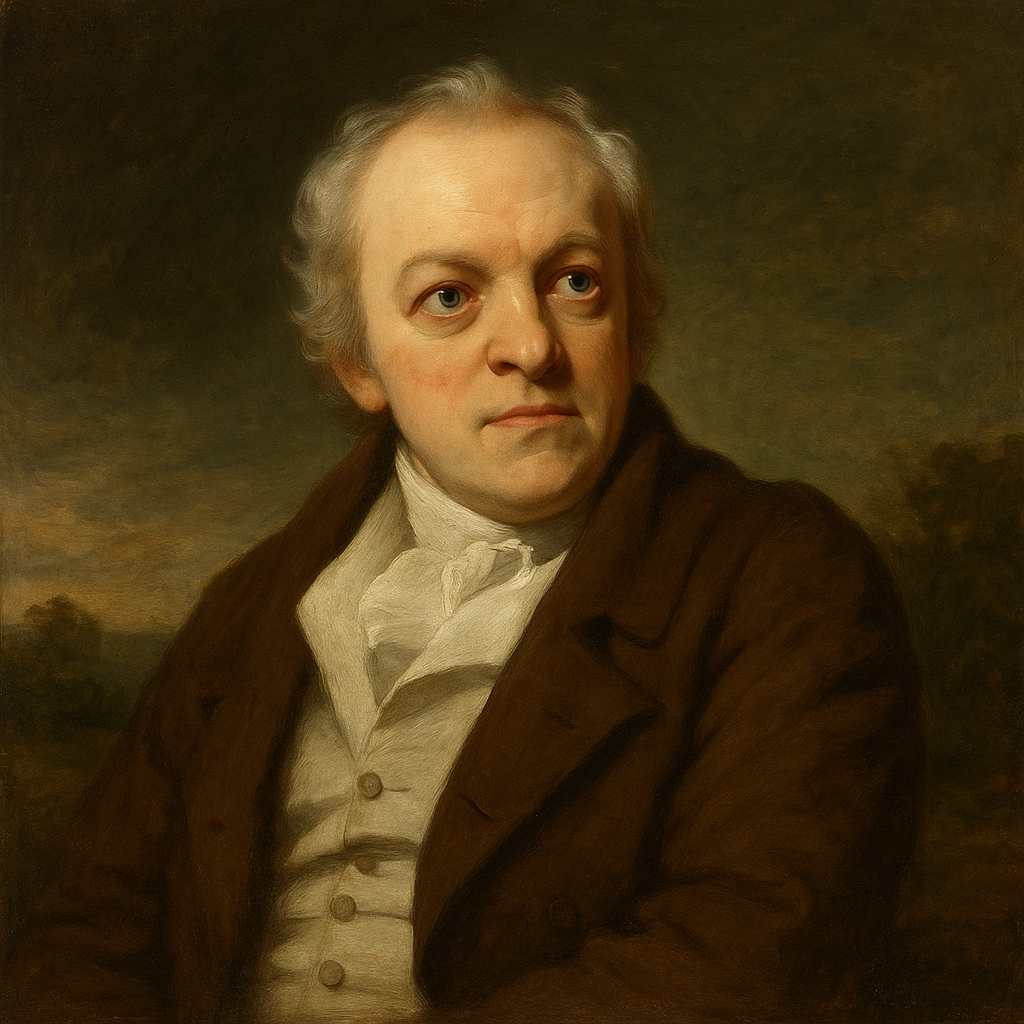Laughing Song
William Blake
1757 to 1827

When the green woods laugh with the voice of joy,
And the dimpling stream runs laughing by;
When the air does laugh with our merry wit,
And the green hill laughs with the noise of it;
When the meadows laugh with lively green,
And the grasshopper laughs in the merry scene;
When Mary and Susan and Emily
With their sweet round mouths sing 'Ha ha he!'
When the painted birds laugh in the shade,
Where our table with cherries and nuts is spread:
Come live, and be merry, and join with me,
To sing the sweet chorus of 'Ha ha he!'
William Blake's Laughing Song
William Blake's "Laughing Song" is a vibrant celebration of joy and harmony in nature, showcasing the Romantic poet's characteristic blend of simplicity and profound meaning. Through its lyrical structure and vivid imagery, the poem creates a world where every element of nature participates in a universal expression of happiness, inviting the reader to join in this jubilant chorus.
The poem's structure is integral to its effect. Composed of six rhyming couplets, the steady rhythm and rhyme scheme (AABBCCDDEE) contribute to its song-like quality, reinforcing the titular theme of laughter and joy. This musical quality is further enhanced by the repetition of the word "laugh" and its variants throughout the poem, creating a sense of echoing mirth that reverberates through each line.
Blake's personification of nature is central to the poem's impact. The green woods, streams, air, and hills are all endowed with the human capacity for laughter, blurring the lines between the human and natural worlds. This anthropomorphism is characteristic of Romantic poetry, reflecting the movement's emphasis on the interconnectedness of humanity and nature. By attributing human emotions to natural elements, Blake suggests a universal joy that permeates all of existence.
The progression of the poem is noteworthy, moving from broader natural elements to more specific and intimate scenes. It begins with expansive imagery of laughing woods and streams, then narrows to focus on individual elements like grasshoppers and birds, before finally introducing human characters. This movement creates a sense of zooming in, drawing the reader closer to the heart of the joyful scene being described.
The introduction of human characters - Mary, Susan, and Emily - in the third couplet marks a turning point in the poem. Their presence, singing with "sweet round mouths," bridges the gap between the natural world and human society. The childlike quality of their laughter ("Ha ha he!") suggests an innocence and purity that aligns them closely with the unspoiled joy of nature.
Blake's use of color is also significant. The repeated mention of "green" (woods, hill, meadows) evokes feelings of freshness, growth, and vitality. This is contrasted with the "painted birds," perhaps suggesting that even in the cultivated or artificial aspects of life, joy can be found. The image of a table spread with cherries and nuts further reinforces this blend of natural bounty and human cultivation.
The final couplet serves as both an invitation and a subtle moral. The speaker calls on others to "Come live, and be merry, and join with me," suggesting that true living is synonymous with embracing joy and community. The repetition of "Ha ha he!" as a "sweet chorus" implies that this laughter is not merely frivolous, but a profound expression of life's essential harmony.
In the context of Blake's broader work, "Laughing Song" can be seen as an embodiment of his concept of "Innocence." It presents a world unmarred by the complexities and corruptions of adult life, where joy is the natural state of being. However, readers familiar with Blake's "Songs of Experience" might detect a subtle undercurrent of fragility in this scene of perfect happiness, knowing how easily such innocence can be lost.
The poem's apparent simplicity belies its philosophical depth. Through its depiction of universal laughter, Blake presents a vision of a world united in joy, transcending the boundaries between humanity and nature. This can be interpreted as a call for humans to reconnect with the natural world and with their own capacity for unrestrained happiness.
In conclusion, "Laughing Song" is a masterful example of Blake's ability to convey profound ideas through seemingly simple verses. Its celebration of joy, its harmonious depiction of nature, and its subtle invitation to the reader all work together to create a poem that is at once delightful and thought-provoking. Through its lyrical beauty and deeper philosophical implications, it continues to resonate with readers, inviting them to pause and consider the joy that permeates the world around them.
This text was generated by AI and is for reference only. Learn more
Want to join the discussion? Reopen or create a unique username to comment. No personal details required!



Comments
No comments yet. Be the first to comment!